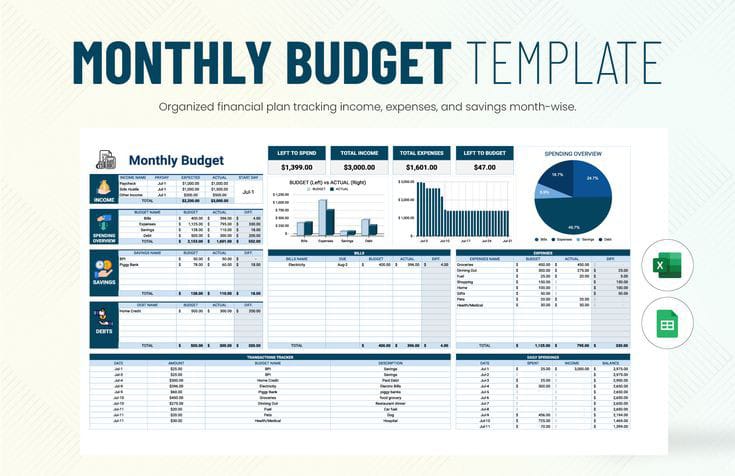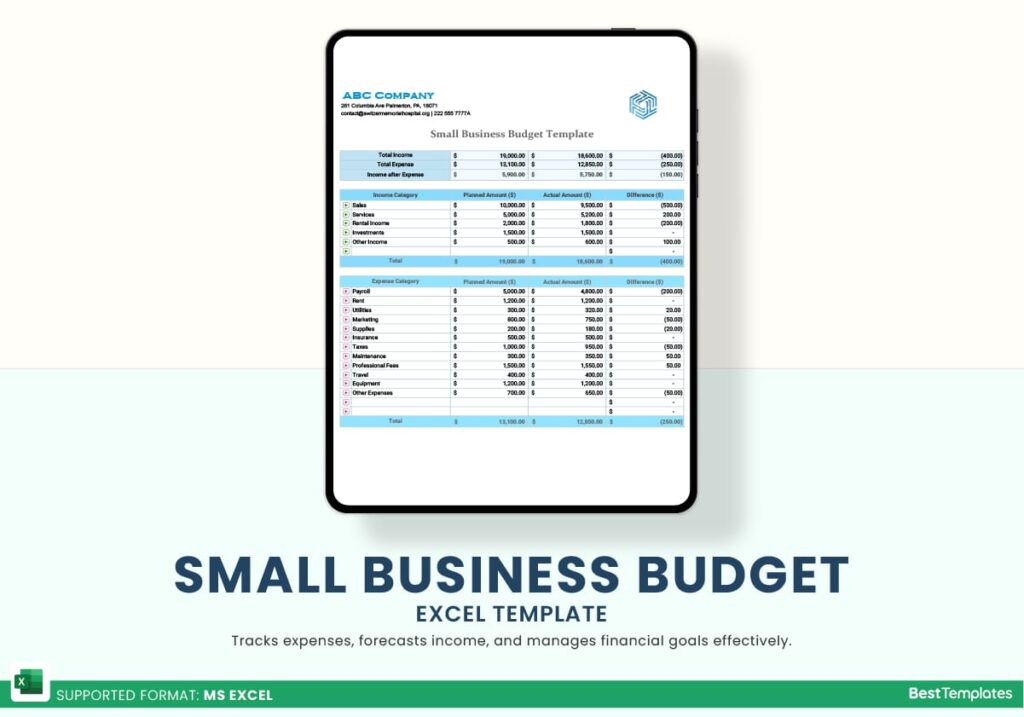In the fast-paced world of hospitality management, maintaining efficiency while optimizing costs is essential for businesses to thrive. One of the critical components of this is creating and managing a labor budget that aligns with operational needs and financial constraints. The HSKP (Housekeeping) Labor Budget Template is an invaluable tool for managers in the hospitality industry, particularly those overseeing housekeeping departments. This article provides an in-depth exploration of the HSKP Labor Budget Template, how it works, and why it is so important for businesses in the hospitality sector.
What is an HSKP Labor Budget Template?
A labor budget template is a tool used to plan and track labor costs. In the context of housekeeping, the HSKP labor budget template specifically focuses on the labor hours required to clean and maintain guest rooms, public areas, and other facilities. This template helps managers estimate and control staffing levels based on predicted occupancy rates, operational goals, and department-specific needs.
Creating a labor budget involves forecasting labor needs for a given period (usually a week, month, or year) and adjusting based on factors like the number of guests, type of service, seasonal fluctuations, and the efficiency of the team. The template is designed to track labor expenditures, ensuring that they do not exceed the allocated budget, and provides a framework for adjusting staffing levels as needed.
Why is an HSKP Labor Budget Important?
In the hospitality industry, particularly in hotels, labor costs often account for a significant portion of the overall operating expenses. For housekeeping departments, these costs can be challenging to control due to variables such as guest volume, room turnover, and seasonal trends. An HSKP labor budget template helps managers balance the need for efficient service with cost-effective labor utilization. By having a clear and structured way to manage labor hours, businesses can achieve several key objectives:
Cost Control
Managing labor costs is one of the most direct ways to improve profitability. By using an HSKP labor budget template, managers can better estimate labor needs based on occupancy rates and adjust staffing levels to match the demand. This helps prevent overstaffing during slower periods and understaffing during busier times.
Operational Efficiency
A well-planned labor budget enables housekeeping managers to optimize workforce allocation. By aligning staffing schedules with actual operational requirements, managers can ensure that all areas are sufficiently covered, resulting in improved operational efficiency and guest satisfaction.
Staffing Flexibility
An HSKP labor budget template allows managers to plan for seasonal variations, unexpected events, or changes in occupancy levels. Having a flexible staffing model ensures that labor resources can be adjusted in real-time without disrupting service standards.
Forecasting and Planning
The ability to forecast labor costs is invaluable for long-term planning. Using historical data, managers can predict staffing needs based on trends and make more accurate financial projections. This forecasting capability also supports other departments, such as finance and human resources, in budget preparation and staffing strategy development.
How Does an HSKP Labor Budget Template Work?
The HSKP labor budget template is typically structured with the following key elements:
Occupancy Forecast
The occupancy forecast provides a projection of how many rooms are expected to be occupied over a specified period. This is crucial as it directly correlates with how many housekeeping staff are needed to clean and maintain the rooms.
Room Assignments
The template outlines the number of rooms assigned to each staff member. Housekeeping staff generally clean a set number of rooms per shift, so this data helps managers understand how many rooms each team member can handle and whether adjustments need to be made.
Staffing Requirements
Based on occupancy and room assignments, the template calculates the total number of staff required per shift or per day. This includes hskp labor budget template housekeepers, supervisors, and other support staff involved in cleaning and maintenance tasks. By comparing this to the current roster, managers can identify any gaps or surpluses in staffing.
Labor Hours
The number of labor hours is derived from the expected number of rooms to be cleaned and the average time it takes to clean each room. The template allows managers to input this data and then generates a total number of labor hours for the period. This helps ensure that there are sufficient hours allocated to meet operational needs without exceeding budget limits.
Labor Costs
The labor costs section of the template calculates the financial impact of the planned labor hours. It factors in the hourly wages of housekeeping staff, including overtime, bonuses, and other related expenses. By comparing these costs against the budget, managers can adjust staffing levels or operational practices to stay within financial targets.
Efficiency Metrics
Some advanced templates include performance metrics, such as the number of rooms cleaned per hour or the labor cost per room. These metrics allow managers to track performance and identify areas where efficiency can be improved.
Steps to Create an HSKP Labor Budget
Creating an HSKP labor budget using a template requires a structured approach. Here are the steps involved in the process:

Step 1: Define the Budget Period
Determine the time frame for which you are hskp labor budget template budgeting. This could be a weekly, monthly, or yearly budget, depending on your needs.
Step 2: Analyze Historical Data
Look at past occupancy levels and labor costs to gain insights into typical staffing requirements. Historical data can help predict future needs and provide a benchmark for your labor budget.
Step 3: Forecast Occupancy
Based on available data, estimate the number of occupied rooms for the period. This may involve analyzing seasonal trends, booking patterns, and market demand factors.
Step 4: Calculate Staffing Needs
Using the occupancy forecast and room assignments, determine how many staff members will be needed for each shift. This includes housekeepers, supervisors, and support staff, such as laundry attendants.
Step 5: Estimate Labor Hours
Multiply the number of rooms to be cleaned by the average time it takes to clean a room. This gives you the total number of labor hours required for the period.
Step 6: Estimate Labor Costs
Estimate the labor costs by applying the hskp labor budget template wage rates for each staff member involved. Include costs for overtime, bonuses, and benefits as needed. Ensure that the total labor costs do not exceed the allocated budget.
Step 7: Monitor and Adjust
Once the labor budget is in place, it’s essential to continuously monitor staffing levels and labor costs throughout the period. If occupancy fluctuates or unexpected events arise, adjustments may need to be made to maintain control over costs.
Best Practices for Managing an HSKP Labor Budget
While the HSKP labor budget template provides the framework for managing labor costs, it is essential to follow best practices for optimal results. Here are some tips for making the most of your labor budget:
Track Performance Regularly
Regularly tracking labor hours and costs helps managers identify trends and potential inefficiencies. By staying proactive, you can adjust the budget as necessary to avoid overages.
Optimize Room Assignments
Ensuring that rooms are assigned hskp labor budget template efficiently can improve staff productivity. For example, grouping rooms in close proximity or assigning rooms of similar size to the same team can reduce time spent walking between rooms.

Leverage Technology
Many modern HSKP labor budget templates come with built-in analytics and automation tools. Using these features can help streamline the budgeting process and provide more accurate forecasts.
Plan for Seasonal Changes
Labor requirements fluctuate based on seasonality. Anticipating peak and off-peak times will help you adjust your labor budget accordingly to avoid unnecessary costs during slower periods or understaffing during busy seasons.
Engage Your Team
Involve your housekeeping team in the hskp labor budget template budgeting process. They can provide valuable insights into the time required to clean rooms, identify potential efficiencies, and offer suggestions for improving workflows.
Conclusion
The HSKP labor budget template is an essential tool for housekeeping departments in the hospitality industry, helping managers balance staffing needs with financial constraints. By forecasting labor costs, monitoring staffing levels, and adjusting as necessary, businesses can control labor expenses and improve operational efficiency. With the right approach and continuous monitoring, the HSKP labor budget template helps businesses maintain cost-effective staffing while ensuring high levels of service quality.
Also read this; 02045996875-3
FAQs About the HSKP Labor Budget Template
- What is the primary purpose of an HSKP labor budget template?
The primary purpose of an HSKP labor budget template is to help managers forecast labor needs, track labor hours and costs, and optimize staffing levels in the housekeeping department while maintaining financial control.
- How do I estimate labor hours for housekeeping?
Labor hours can be estimated by multiplying the number of rooms to be cleaned by the average time it takes to clean each room. This calculation will give you the total number of labor hours required for a given period.
- Can I use an HSKP labor budget template for other departments?
While the HSKP labor budget template is specifically designed for housekeeping, many of the principles and components can be adapted for other departments within a hotel or hospitality business, such as the front desk or maintenance.
- How often should I review and update my labor budget?
It is important to review and update your labor budget regularly, especially during peak seasons or when occupancy levels change. Continuous monitoring allows you to make adjustments in real-time, ensuring you stay within your budget.
- What are some common challenges in managing an HSKP labor budget?
Common challenges include fluctuating occupancy levels, underestimating labor needs during busy times, and overestimating during slow periods. Proper forecasting and flexibility are key to overcoming these challenges.
